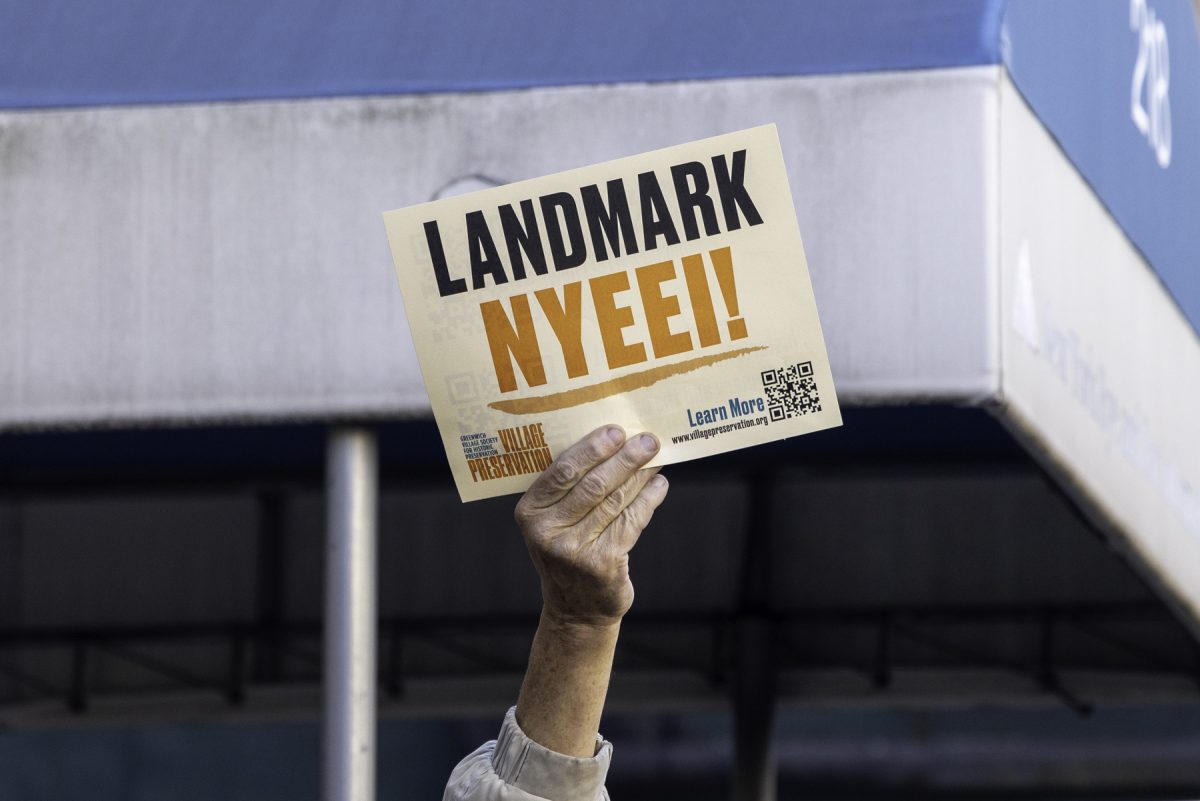In 1820, two New York physicians founded the Western Hemisphere’s first specialized eye hospital off an intersection in lower Chinatown. For three decades, the hospital was in constant limbo — relocating seven times before finally settling into a commercial Romanesque building at Second Avenue and East 13th Street. After nearly two centuries as a hub for research and treatment for sensory disabilities, New York’s Eye and Ear Infirmary is now facing threats of decentralization, leaving village advocates to call for its preservation and landmark status.
Since NYEEI merged with the hospital network Mount Sinai in 2013, concern over its future at the building has circulated local advocacy groups. However, as Mount Sinai laid out plans to relocate the infirmary’s departments across Manhattan, demand for municipal support to preserve its building escalated. None of New York’s over-38,000 landmarked buildings have been designated for disability history — a disparity advocates aim to conquer with NYEEI.
“For two and half years, we — and doctors, patients and disabled advocates — have sought to save not only the vital services the New York Eye and Ear Infirmary provides, but to ensure its important history is honored and preserved,” Andrew Berman, executive director of Village Preservation, told WSN.
Berman joined dozens at a Tuesday rally outside the building, where demonstrators reiterated the call with signs proclaiming, “Landmark NYEEI” and “Disabled History Matters.” One homemade sign featured an image of Godzilla tearing through New York, with the label “Mount Sinai.” If the building were deemed a landmark, its real estate value would decrease significantly — lowering incentive for Mount Sinai to leave — and any changes to the building’s structure would require approval from the New York City Landmarks Preservation Commission. Advocates have said that if the infirmary were to leave, the building would be subject to demolition.
The building has a rich history. Its founders were known as “founders of American ophthalmology,” and in 1903, Helen Keller spoke at the building’s dedication. In an interview with WSN, Mike Schweinsburg, president of nationwide disability rights group 504 Democratic Club, said that the building’s demolition would be not only an architectural loss for the neighborhood but a major hindrance for those who rely on its services.
Jeff Peters, the director of communications for the Center for Independence of the Disabled New York, reiterated Schweisenburg’s apprehension. He said that he had seen a wave of concern in reaction to the infirmary’s uncertain future, especially from its returning clientele.
“It is a historical medical facility, that is a fact,” Peters said in an interview with WSN. “It’s also a medical facility that countless New Yorkers — specifically New Yorkers with disabilities — have come to trust and count on for their care.”
The push to protect NYEEI surfaced in late 2022 as Mount Sinai applied to merge the operating certificates of the infirmary with Mount Sinai Beth Israel, a nearby hospital also at risk of closing. Mount Sinai cited declining patient volumes and subsequent loss in revenue, and planned to gradually disperse services from the two hospitals across various Manhattan medical centers. After doctors, politicians and disability rights advocates formed Save NYEEI, a coalition to counteract the merger, the New York Department of Health rejected Mount Sinai’s application.
Since then, Mount Sinai has not shared its plan for the infirmary. Paul Lee, president of Save NYEEI, told WSN that only a few services have been relocated to other centers, and that communication with the hospital had been “very opaque.” Lloyd Stanford, who leads the coalition, added that both Beth Israel and NYEEI have suffered financially since they had both been undertaken by Mount Sinai.
“All I can say is there clearly has been mismanagement, and that’s demonstrated simply by the downgrading,” Stanford said. “They said they were going to invest in New York Eye and Ear, there’s no evidence that they’ve done that.”
NYEEI serves a population with more Medicaid and self-pay patients compared to Mount Sinai’s locations uptown. Laura Sewell, the executive director of the East Village Community Coalition, said at the rally that East Village services deserve more respect, citing that its uptown counterpart hosts significantly more landmarked buildings.
“Our neighborhood is undervalued, it’s under-designated — the contrast is shocking,” Sewell told WSN. “Our history of public service and mutual aid are unrecognized, and our landmarks and our buildings are unrecognized.”
NYEEI also holds significant Black history as the hospital where David Kearny McDonough practiced — the first African American eye and ear specialist and the first formerly enslaved person in America to earn a college degree. He took his middle name after John Kearny Rodgers, the founder of NYEEI, who advocated for McDonough’s medical degree and opportunities despite prevalent racism in the field.
Sharon McLennon Wier, executive director of CIDNY and a patient at NYEEI, told WSN that intersectionality is a critical component of disability care. She said that staff members’ longevity at the infirmary allowed them to hone their care for people with disabilities.
“It’s a trifecta effect for me because I’m Black, I’m blind, I’m a woman,” Weir said. “They understand it, and it’s the only specialized service hospital that’s left in the city that is dedicated to taking care of the needs of people that have sensory disabilities.”
Save NYEEI, Village Preservation and other local advocacy groups are currently encouraging citizens to write to New York City Mayor Eric Adams and Landmarks Preservation Commission chair Sarah Carroll, urging that the city landmark the building.
“The mission of New York Eye and Ear is to serve the poor and the rich — to serve everybody,” Lee said. “Medicaid, self-pay, immigrant, coming off a plane from Haiti, coming off a plane from Brazil. Doesn’t matter. You come, we take care of you.”
Contact Audrey Abrahams at [email protected].
























































































































































